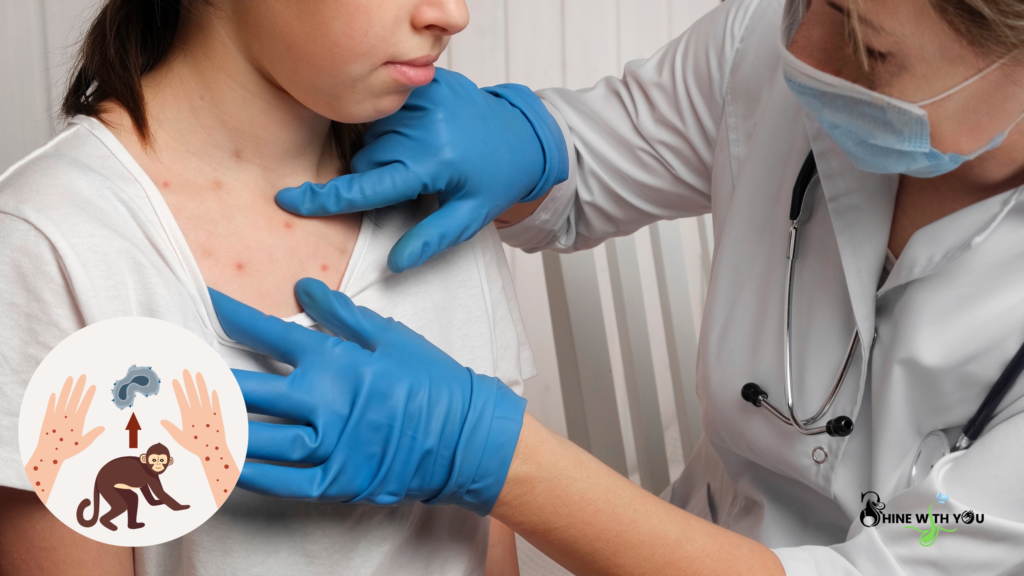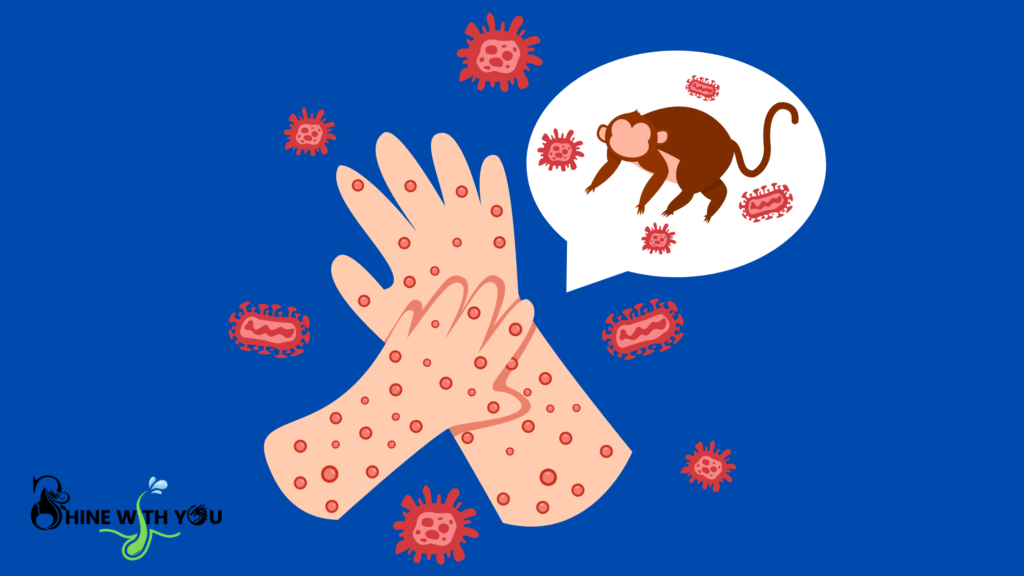What exactly is Mpox (Monkeypox)? Why so much fuss about it?
What Is Mpox (Monkeypox) And How Does It Spread?
Many of us may have first learned about Mpox (Monkeypox) in 2022, although mpox was first discovered in 1958 during an outbreak in monkeys used for research, thus getting its name. The first human case was recorded in 1970 in the Democratic Republic of Congo. It occurs primarily in Central and West African countries, but sporadic outbreaks have occurred elsewhere due to travel or imported animals. In 2022, Mpox (Monkeypox) became widely discussed when the outbreak spread among nearly 100,000 people in more than 100 countries. The 2022 outbreak quickly spread from the Democratic Republic of Congo (DRC) to places where it had never been detected before. At that time, it became so severe that, in the United States alone, it caused more than 40,000 infections and more than 60 deaths.
Currently, new outbreaks of mpox have put it back in the global news. Here are things we should know to be safe from this epidemic:

What Are The Signs And Symptoms Of Mpox (Monkeypox)?
Mpox, previously known as Monkeypox, is a viral disease that presents with several symptoms similar to smallpox but generally milder. Symptoms typically appear 1 to 2 weeks after exposure and can last 2 to 4 weeks. Common symptoms include:
1. Fever: Often one of the first symptoms.
2. Headache: Persistent and severe in some cases.
3. Muscle aches: Myalgia and discomfort.
4. Backache: General discomfort in the back region.
5. Swollen lymph nodes: Lymphadenopathy, which helps distinguish Mpox from smallpox.
6. Chills: Accompanied by a rise in body temperature.
7. Exhaustion: General fatigue and tiredness.
8. Rash: Develops 1 to 3 days after the onset of fever, often beginning on the face and then spreading to other parts of the body. It progresses from macules to papules, vesicles, pustules, and finally crusts over.
The rash can be painful and itchy, and the number of lesions can vary. If you suspect you have been exposed to Mpox or are experiencing these symptoms, it’s essential to contact a healthcare professional for evaluation and appropriate care.
What Is Your Risk Of Getting Mpox (Monkeypox)?
Your risk of getting mpox depends on several factors. However, the main factors affecting risk are outlined below:
- Close contact with an infected person: This is the primary mode of transmission. Close physical contact, including sexual contact, is the most significant risk factor. Sharing bedding or towels with an infected person also increases risk.
- Exposure to infected animals: While human-to-human transmission is the most common, mpox can be spread through contact with infected animals (rodents and primates, mainly). This is a less common risk factor for most people.
- Community transmission levels: The risk is higher in areas with higher rates of mpox cases. Checking your local public health authority’s website can provide information on the current situation in your region.
- Your behaviors and practices: Engaging in behaviors that increase your risk of close physical contact with multiple partners increases your risk. Practicing safe sex reduces risk.
When people contract empox, more serious complications such as pneumonia or dysentery are experienced. Risk factors for this infection include:
To reduce the risk of transmission, it’s important to practice good hygiene, avoid close contact with infected individuals or animals, and follow any public health recommendations.
To assess your personal risk: Consider your recent contacts, travel history (especially to areas with ongoing outbreaks), and your sexual health practices. If you have concerns about your risk, consult a healthcare professional. They can provide tailored advice based on your individual circumstance.

Are There Mpox (Monkeypox) Vaccines?
Yes, there are vaccines available for mpox (formerly known as monkeypox). Two vaccines are currently used to prevent mpox, both of which were originally developed for smallpox but are effective due to the close relation between the two viruses:
1. JYNNEOS (Imvamune or Imvanex):
- Type: Live, non-replicating vaccine.
- Approved for Mpox: Yes, specifically approved for mpox in many countries.
- Administration: It is given in two doses, typically 28 days apart.
- Target Group: This vaccine is recommended for those at high risk, including healthcare workers, lab personnel handling poxviruses, and people who have been exposed to mpox. It is also used for people at high risk due to sexual transmission, particularly men who have sex with men (MSM).
2. ACAM2000:
- Type: Live, replicating virus vaccine.
- Approved for Mpox: It is licensed for smallpox but can be used for mpox in an emergency.
- Administration: This vaccine requires only one dose and is administered via a special technique known as skin scarification.
- Target Group: This vaccine is recommended for people at risk of occupational exposure to orthopoxviruses, including military personnel and lab workers. However, it is associated with more side effects compared to JYNNEOS.
Vaccination Strategy:
- Pre-exposure Prophylaxis (PrEP): For individuals at high risk of exposure (e.g., healthcare workers or those in endemic regions).
- Post-exposure Prophylaxis (PEP): Can be administered to people after exposure to mpox to prevent infection or reduce its severity. It is most effective when given within four days of exposure.
Both vaccines are important tools in containing outbreaks, especially during recent surges in Africa and other affected regions.
Diagnosis and Treatment
Mpox (Monkeypox) is a viral zoonotic disease caused by the monkeypox virus, a member of the Orthopoxvirus genus. It is similar to smallpox but typically less severe. Mpox primarily occurs in Central and West African countries, but outbreaks have occurred in other regions, including Europe and the Americas.
Diagnosis is usually based on clinical examination and can be confirmed with laboratory tests that identify the virus’s genetic material. Current treatment approaches focus on alleviating symptoms, as there is no specific antiviral treatment approved for mpox. Vaccinia-based vaccines used for smallpox are effective preventive measures, offering cross-protection against mpox due to the similar nature of the viruses.
Diagnosis of Mpox (Monkeypox):
1. Clinical Symptoms:
- Fever, headache, muscle aches, and exhaustion.
- Swollen lymph nodes (a key distinguishing feature from smallpox).
- Rash that typically starts on the face and spreads to other parts of the body. The rash goes through several stages: macules, papules, vesicles, pustules, and crusts.
2. Laboratory Diagnosis:
- PCR (Polymerase Chain Reaction): The preferred method for detecting monkeypox virus DNA from skin lesion samples.
- Serology: Antibody detection may help in retrospective diagnosis, but it is not typically used for acute cases.
- Electron Microscopy: Useful for identifying poxvirus particles in lesions, though less commonly done due to availability and expertise.
- Viral Culture: Can be performed, but it is less commonly used compared to PCR because of biosafety concerns.
3. Differential Diagnosis:
Other conditions with similar symptoms include chickenpox, smallpox, measles, bacterial skin infections, and other causes of vesicular rashes.
Treatment of Mpox (Monkeypox):
There is no specific antiviral treatment for mpox, but supportive care and symptom management are the mainstays of treatment.
1. Supportive Care:
- Manage fever and pain with antipyretics and analgesics.
- Fluid and electrolyte balance maintenance.
- Treat secondary bacterial infections if they occur.
2. Antiviral Therapy:
In severe cases or high-risk individuals (e.g., immunocompromised, children), certain antiviral drugs may be used off-label:
- Tecovirimat (TPOXX): Approved for smallpox but has shown effectiveness in treating mpox. It inhibits viral spread.
- Cidofovir/Brincidofovir: These are antiviral agents that may be considered in more severe cases.
3. Vaccination:
- Post-exposure prophylaxis: The smallpox vaccine (ACAM2000) or the newer JYNNEOS vaccine may help prevent or reduce the severity of mpox in those exposed to the virus.
- Pre-exposure prophylaxis: Recommended for individuals at higher risk, such as laboratory personnel and healthcare workers dealing with poxvirus-related samples.
4. Isolation and Infection Control:
- Infected individuals should be isolated to prevent transmission.
- Personal protective equipment (PPE) is essential for healthcare workers treating infected patients.

Self-Care And Prevention:
Self-care and prevention strategies for mpox (monkeypox) are essential to limit the spread of the virus and manage symptoms for those who are infected. Here are the key measures:
Self-care for Mpox (Monkeypox):
If you suspect or have been diagnosed with mpox, you can take the following steps to care for yourself and prevent spreading the virus to others:
1. Symptom Management:
- Stay hydrated: Drink plenty of fluids to prevent dehydration, especially if fever is present.
- Fever and pain relief: Use over-the-counter pain relievers like acetaminophen or ibuprofen to reduce fever and manage pain.
- Rest: Ensure adequate rest to support your immune system in fighting the virus.
- Skin care: Keep rashes and lesions clean and dry. You can use saline or antiseptic solutions to clean the lesions and help prevent secondary infections.
- Itching: For itching caused by rashes, calamine lotion or oatmeal baths can help soothe the skin.
2. Preventing Secondary Infections:
- Avoid scratching the lesions to prevent bacterial infections.
- Use clean bandages to cover sores, especially if they are oozing.
- Keep fingernails short and clean to reduce the risk of breaking the skin while scratching.
3. Isolation and Avoiding Contact:
- Stay isolated from others, especially during the infectious period when symptoms such as rash are present. Mpox spreads through close contact with bodily fluids, respiratory droplets, and skin lesions.
- Avoid contact with pets and other animals to prevent zoonotic transmission.
4. Personal Hygiene:
- Wash your hands frequently with soap and water, especially after touching your rash or scabs, or use hand sanitizer with at least 60% alcohol.
- Use a separate bathroom, if possible, or disinfect shared bathroom surfaces after each use.
- Do not share personal items such as towels, bedding, or clothing with others.
Prevention of Mpox (Monkeypox):
Preventing infection with mpox involves measures to reduce exposure and limit the spread of the virus.
1. Avoid Close Contact:
- Avoid direct skin-to-skin contact with individuals who have rashes or lesions suspected to be mpox.
- Refrain from physical intimacy, including sex, with infected individuals until they have fully recovered.
2. Use of Personal Protective Equipment (PPE):
- Healthcare workers and caregivers of mpox patients should wear PPE such as gloves, masks, and gowns to avoid coming into contact with the virus.
- Properly dispose of or clean items such as clothing, bedding, and towels that may have been contaminated.
3. Vaccination:
- If you’re at high risk of exposure (such as healthcare workers, laboratory personnel, or people who have been in close contact with mpox cases), consider getting vaccinated with the JYNNEOS or ACAM2000 smallpox vaccines, which provide cross-protection against mpox.
- Post-exposure vaccination (within 4 days of exposure) can help prevent the disease or reduce its severity.
4. Safe Handling of Animals:
- Avoid contact with animals that may carry the virus, such as rodents and primates, especially in areas where mpox is endemic.
- In regions where mpox is common, cook animal products such as meat thoroughly before eating.
5. Environmental Cleaning and Disinfection:
- Clean and disinfect high-touch surfaces, such as countertops, door handles, and bathroom surfaces, using an EPA-registered disinfectant effective against viruses.
- Launder clothing, bedding, and towels of infected individuals in hot water, using detergent, and dry them on high heat.
General Public Health Measures:
- Keep informed about mpox outbreaks and adhere to local public health recommendations.
- If there are community outbreaks, avoid large gatherings or areas where transmission might be more likely, such as crowded settings or intimate venues.
By following these self-care and prevention strategies, individuals can help manage the symptoms of mpox and reduce the risk of spreading the virus to others.
Recent Developments And WHO Response:
In recent developments, Mpox (Monkeypox) has continued to pose a global health challenge, particularly in 2024. While the multi-country outbreak that began in 2022 is now largely under control in many parts of the world, a significant surge in cases has been reported in Central and Eastern Africa. The Democratic Republic of the Congo (DRC) has seen a sharp rise in infections, driven by Clade I variants of the mpox virus. This includes two distinct outbreaks: Clade Ia, primarily affecting children in endemic regions, and Clade Ib, which has spread to adults and neighboring countries such as Rwanda, Kenya, and Uganda.
In response to the worsening situation, the World Health Organization (WHO) declared mpox a Public Health Emergency of International Concern (PHEIC) in August 2024. This decision was made after a rapid increase in cases, including the first detections of Clade Ib outside of Africa in countries like Sweden and Thailand. WHO’s latest strategic plan emphasizes strengthening surveillance, enhancing vaccine distribution, and improving global coordination to prevent further spread, especially in vulnerable populations such as children, pregnant women, and the immunocompromised.
These developments highlight the ongoing need for international action to contain mpox, with a particular focus on African regions where the virus remains endemic.
Overall, while mpox can be a concerning disease due to its potential to spread and cause significant symptoms, proactive measures, vaccination, and awareness can effectively manage and contain outbreaks.
Join our community! Subscribe to receive updates on [shinewithyou.com]. Don’t forget to share your thoughts and ideas in the comments section below each post. Your feedback will motivate me to provide more new hair and skin care solutions, remedies, and tips Thank you.
